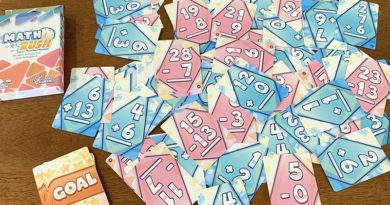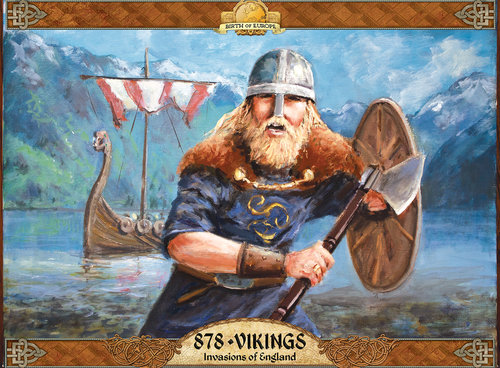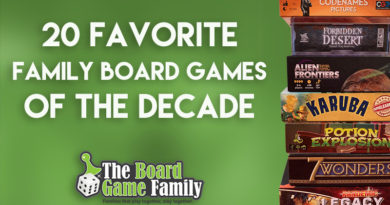That’s Pretty Clever dice game review
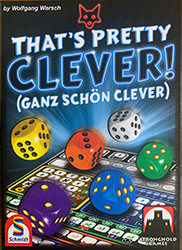
You know you’ve found a hit game when your family plays it over and over and over.
Such is the case with That’s Pretty Clever dice game by Schmidt Spiele and Stronghold Games.
Since we first played it a couple weeks ago, we’ve played it at least once almost every day. And since it’s hard to just play once, we’ve played it back to back many of those days.
Our first play of That’s Pretty Clever was at our monthly Guys Game Night with my buddies. During the first round, one of them commented, “So far I’d call this game this game ‘That’s Mildly Interesting.” But by the end of the game he was ready to buy a copy.
So what’s the big draw to this simple dice game?
Read on and we’ll tell you.
How to play That’s Pretty Clever
When you look at the score sheet, That’s Pretty Clever may not look so simple. But it really is.
The goal in the dice game is to score the most points. Players do this by marking the results of the colored dice rolls in the corresponding colored sections of their score sheet.
The catch is that each section scores differently.
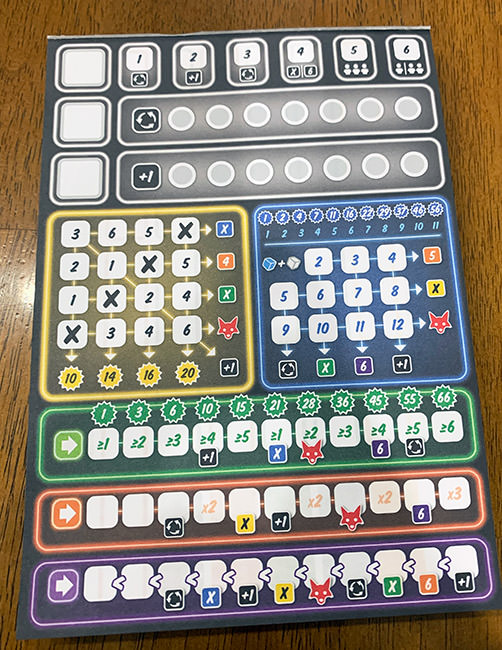
But before we get to those differences, I’ll describe the basic flow of play.
The game is played over a number of rounds where each player will take a turn being the Active player.
At the start of their turn, the Active player rolls all 6 dice and chooses one to place on the first dice space in the upper left corner of their sheet. Once placed, that player also immediately marks the result in that section of their sheet.
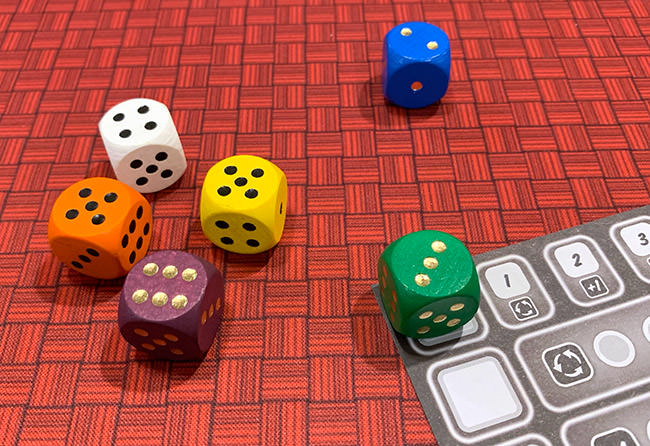
Any dice that show a result lower than the number of pips on the die they placed on their sheet are placed on the Silver Platter image in the box. For example, if they took a die showing a 4, any dice showing 1, 2, 3 would be place on the platter.
Then the Active player rolls any remaining dice and again chooses one to place and mark on their score sheet. The Active player will then roll for a third time and repeat the process.
After taking a 3 die, any remaining dice are place on the Silver Platter image not matter their pip count.
Then all other players get to choose one of the dice on the Silver Platter to mark on their own score sheets. They don’t actually take the die, they just use its result to mark on their sheet. Thus, multiple Passive players may choose the same die to use.
Then the player to the left becomes the Active player and takes their turn.
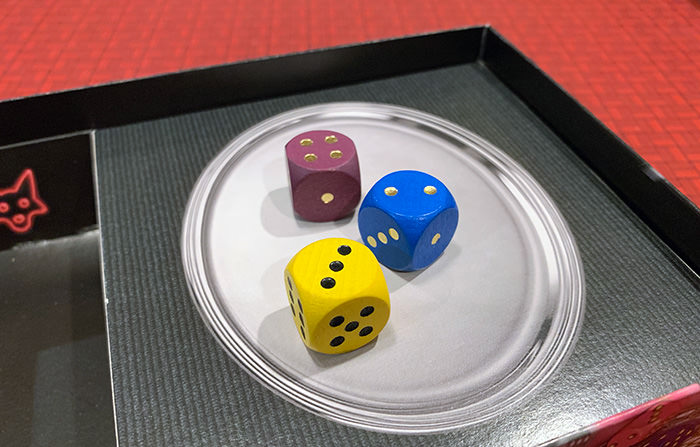
Using the Dice
Now, to explain how each colored die is used.
White: The white die is a wild and may be used as any colored die. It is also combined with the Blue dice for marking in the Blue section.
Yellow: The player marks an X over a space in the Yellow section matching the number of pips on the die. These can be marked off in any order.
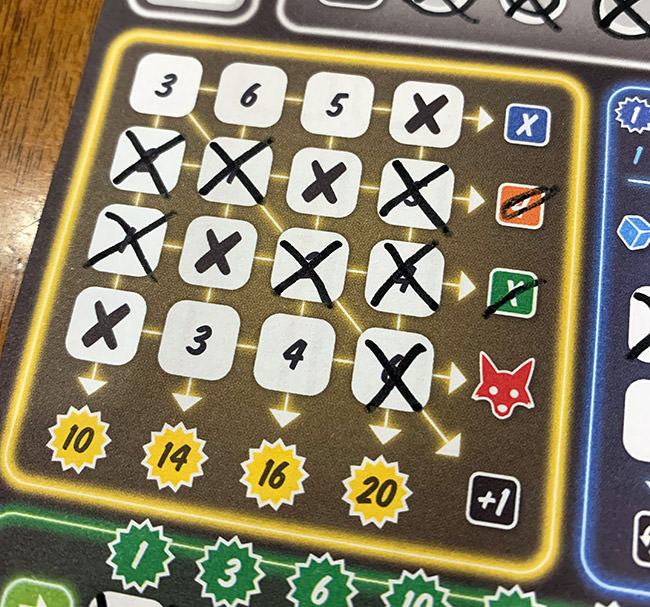
Blue: The player adds the Blue and White dice together to get a total and then marks an X over the matching number space in the Blue section. These can be marked off in any order.
Green: Players must start on the left-most Green space and move to the right without skipping any spaces. For each space, the player must meet the requirement indicated in that space. For example, the first Green space shows greater than or equal to 1. If the Green die meets that requirement, the player marks an X in that space.
Orange: Players must start on the left-most Orange space and move to the right without skipping any spaces. The player writes the number of the die result in that space. If the Orange die chosen is a 3, the player writes the number “3” in that space. Some spaces have multipliers, such as 2x. So a player using a 3 Orange would instead write “6” in that space.
Purple: Players must start on the left-most Purple space and move to the right without skipping any spaces. For each space, the player must meet the requirement indicated in that space. The requirements for Purple is that the next number must be higher than the previous space. The only exception is that when a “6” is written, the requirements reset. So after a space with a 6, the player is free to use any number in the next space.
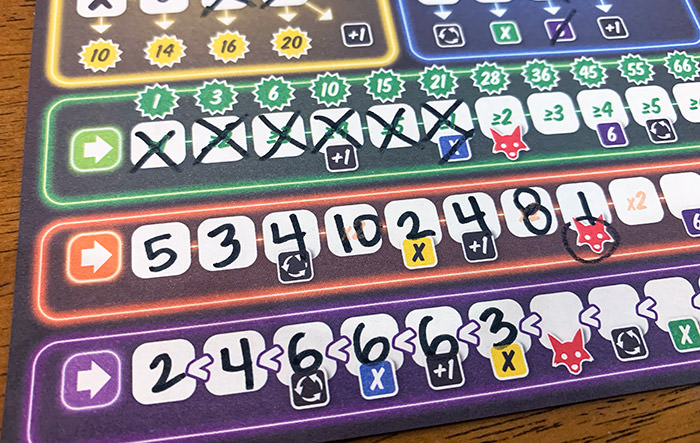
While marking spaces, players may also be granted bonuses in each section. In the Green, Orange, and Purple sections some spaces have icons under them. When a player marks this space, they claim the bonus associated by the icon.
In the Yellow section, these bonuses are gained by completing rows. And in the Blue section, players get these bonuses when the complete a row or a column.
A Yellow, Blue, or Green X icon let the player cross off a space in that section of their sheet. A number in a colored box lets the player write that value in the matching colored section.
There are also black symbols that players can reach as well as getting them at the start of some rounds. One such symbol indicates opportunities to re-roll their dice. And the other lets players claim an extra die value at the end of anyone’s turn.
The Fox symbol awards points at the end of the game. Each Fox gained will score as many points as the player’s lowest-scoring section.
Once all players have been the Active player, that round ends and another round begins. Players continue taking turns until the set number of rounds based on player count is reached. Then players total their scores.
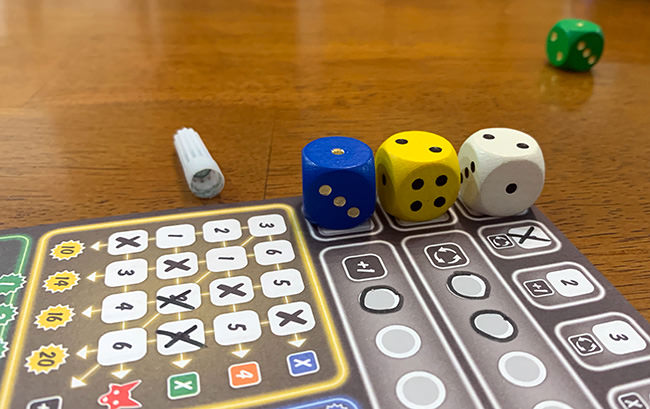
Scoring each section
And scoring is unique to each color section as well.
In the Yellow section, players score points for completing columns. The total value of a completed column is listed at the bottom of that column. In the Blue section, players gain points based on how many total spaces they’ve crossed off. These points at listed at the top of the Blue section.
In the Green section, players get points based on how far they’ve progressed on the Green track. These points are listed above each space in the Green section.
And for both the Orange and Purple sections, players add up the total value written in those spaces.
When the game ends, the players write their scores from each section on the back of their sheet and total them up.
The player with the most points wins!
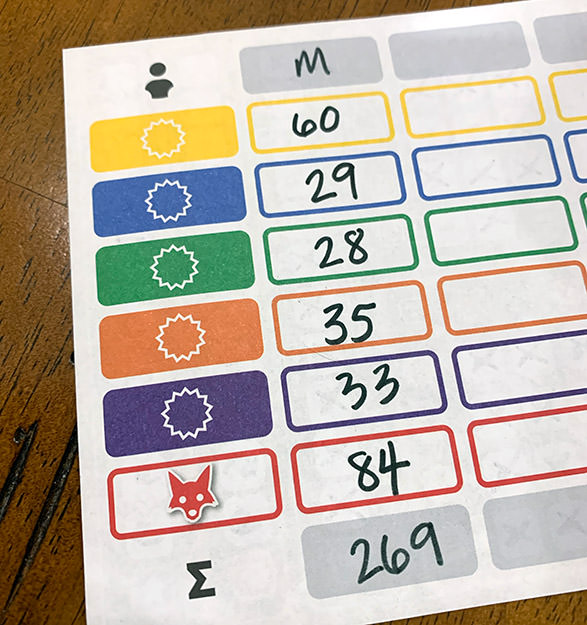
Can the whole family enjoy That’s Pretty Clever?
Absolutely!
This really is a fun dice game for the whole family.
It combines the luck of simple dice rolling with the decisions of which dice to score when.
Yet, as simple as it is, we’ve discovered a lot of nuance in the choices to be made.
When you’re the Active player, you get to choose both your fate and influence the fate of the other players. That’s because they’re going to get to use the dice you pass up.
You may want a high numbered die, but that means you may have to place more dice on the platter, leaving you less to roll on your next roll.
This also makes the game interesting for everyone the whole time.
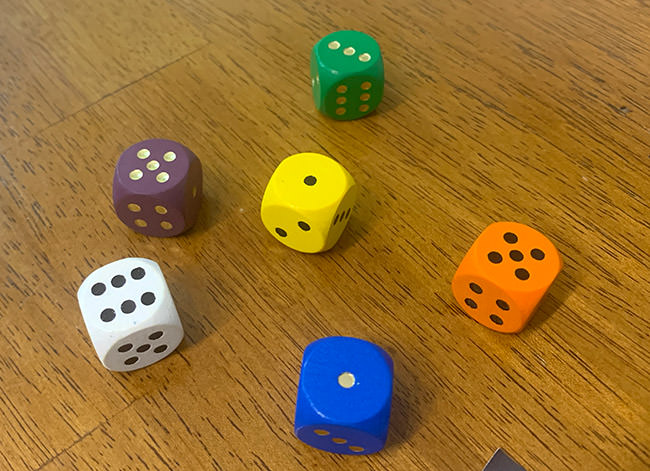
Players don’t just sit back and watch other players roll dice until it’s their turn. Instead players are totally trying to influence the Active player on which dice to take. Because they know they’ll be impacted by which dice aren’t selected.
And it’s always fun when there’s something to do when it’s not your turn.
For example, in a 4-player game, during each round, each player will get to mark 6 dice results. They’ll get to choose 3 when they’re the active player and 1 each when it’s the 3 other players’ turns.
And as the game progresses the fun ramps up because of the bonus spaces!
You may mark off one space that grants you a bonus for another section. And when you mark that section space you may gain another bonus for another section.
There’s something very rewarding about chaining results like that!
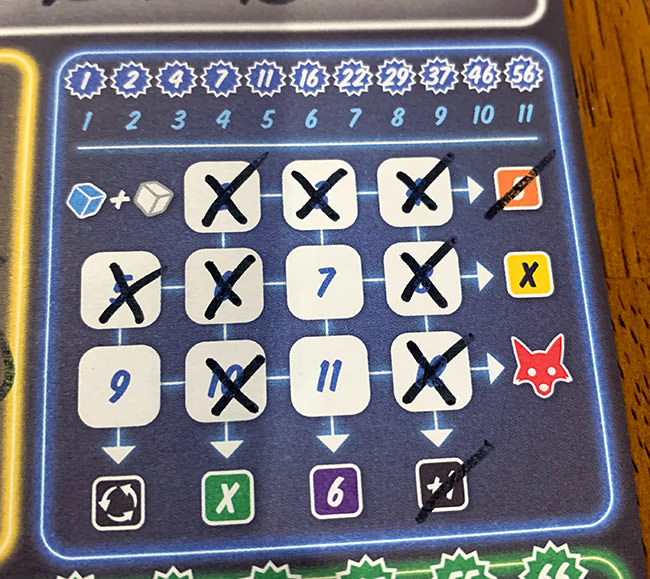
Yet even with all that chaining, you still won’t be able to do everything you want. So you’ll have to make trade-offs with every choice.
It’s that variability in how the game plays out and the choices we’re faced with each roll that keeps us coming back for more!
And that’s why That’s Pretty Clever has yet to make it its way to the game closet!
Instead, it seems to have a permanent spot on the kitchen desk — putting it within easy reach to play again and again.
How does That’s Pretty Clever score on our “Let’s Play Again” game meter?
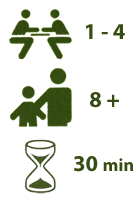 Is the answer to this question not obvious yet?
Is the answer to this question not obvious yet?
I can easily predict already that That’s Pretty Clever will be near the top of our most-played games for 2020. I also predict that although the game comes with a thick pad of score sheets, that by the end of the year, we’ll be printing our own score sheets because we’ll have run through those provided in the game.
If you’re looking for a light, dice game that also offers interesting choices that the whole family can enjoy playing, then pick up a copy of That’s Pretty Clever.
We’d like to thank Miniature Market for a review copy of That’s Pretty Clever.



